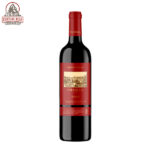Jiangsu Cuisine
Jiangsu cuisine is one of the lesser known of the Eight Great Cuisines of China among foreigners. Jiangsu Province has the highest per capita income. Probably for this reason, the food is more gourmet style. It is very refined and presented colourfully and artistically.
Probably the most accommodating style of food for the true wine lover. A style where the western approach to food and wine pairing really works. White with fish and poultry. Red with darker meats. Drier wines (both red and white) are truly in their element with Jiangsu cuisine. The natural flavours that are allowed to blossom in Jiangsu cuisine are a perfect match to premium and ultra premium wines, which would normally be over powered and wasted by heavy chill spice flavours of other styles of Chinese cuisine.
Names: Jiangsu food, Su cuisine (苏菜 Sūcài /soo-tseye/)
Location: Jiangsu Province (coastal east China) — Nanjing, Suzhou
Distinctives: seafood; richly aromatic with fine presentation
Flavors — Marine, Moderate, and Natural
A wide variety of seafoods are eaten. Unlike most Western seafood restaurants where the main dishes include a few varieties of fish and oysters, Jiangsu people eat many things most people have never seen. The wide range of sea vegetable dishes is something healthful to explore.
Their chefs emphasise bringing out the distinct natural flavours in the rich range of meat and plant ingredients in their dishes. So they don’t add much salt, sugar or seasonings like chilli powder that hide and overwhelm the ingredients’ flavours. So their meals are richly aromatic.
Ingredients of Jiangsu Cuisine
Seafood: Since Jiangsu is on the coast, the fresh seafood is the highlight. The high income means the people demand high quality ingredients, and the chefs are known for selecting the best seafood for their dishes.
Staples: Both rice and wheat products are the staples. Jiangsu people also grow various root crops for staple foods. A favourite dish and a popular snack is sweet taro filled rice balls or rice cakes.
Herbs and vegetables: The province is also known for its wide diversity of agricultural products. There are a lot of lakes and ponds in the region, so much water shield, lotus, Chinese chestnuts, winter bamboo shoots, water bamboo, and water chestnuts are eaten. Jiangsu’s comparatively wealthy people are also particular about choosing vegetable/herb combination dishes for their health effects.
Jiangsu chefs pay attention to both the season and the weather, and according to their understanding, they use different foods to achieve balance and promote health and comfort. For example, ginseng is thought to be good for consumption in cold weather, and by most elderly people.
For Chinese, food is medicine. You could talk with your guide, waiters, or local Chinese friends about your health or how you feel physically, and they’ll help select the right dishes for you. Yancheng City in particular is known for medicinal dishes. Learn more about Chinese Medicinal Food.
Cooking Methods and Styles
Reflecting the wealthy and imperial origins of the style, their chefs use very elaborate and precise cooking methods and presentation. Their cooking methods are more complex than stir-frying. They commonly stew, braise, simmer, and warm to preserve the original flavours and to maintain clarity, freshness, and mildness.
Six Main Regional Styles
Su Cuisine is composed of six styles: those of Huaiyang, Nanjing, Yangzhou, Suzhou, and the less notable styles of Xuzhou and Haizhou.
Chinese chefs think that the Huaiyang (Huai’an) style is one of the four best in China, and it is frequently served at government banquets. It is considered to be one of the four most influential regional cuisine styles (四大菜系 ‘Four Great Cuisines’). Their forté is aroma and a high degree of visual artistry. Expect food set down in a rainbow of colours at a gourmet restaurant.
Nanjing style is famous for its fine cutting and preparation techniques. The dishes are not only fine-tasting, but also very good-looking. It features freshness, fragrance, crispness and tenderness. Like the rest of Jiangsu styles, the dishes tend to be mildly sweet in taste. The excel at seasonal vegetables, freshwater fish and seafood.
Yangzhou style is renowned for fine cutting techniques, perfect timing, fresh colour and original design. The Yangzhou fried rice is a favourite dish. It is much more complex in terms of ingredients and probably more nutritious than fried rice in the West.
Showing all 5 results















